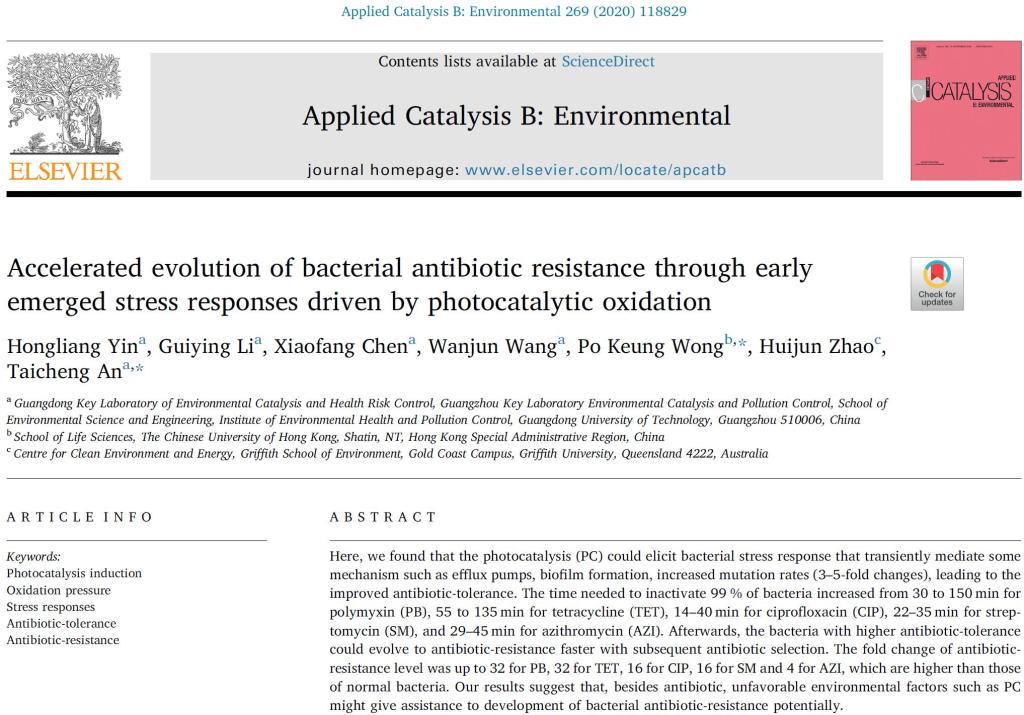近日,广东工业大学环境健康与污染控制研究院、环境科学与工程学院殷洪亮博士生等在光催化作用于耐药细菌方面取得最新研究进展,研究成果以《Accelerated evolution of bacterial antibiotic resistance through early emerged stress responses driven by photocatalytic oxidation》为题发表在Applied Catalysis B: Environmental, 269 (2020) 118829上。该工作首次揭示了光催化氧化刺激对细菌耐药性发展的加速作用,并从细菌应激的角度分析了耐药性加速发展的详细机制。研究结果为了解水体中细菌在环境刺激过程中耐药性的发展机制提供新的理解。

该论文采用TiO2纳米颗粒作为催化剂构建了光催化刺激诱导过程,研究了其对细菌耐药性发展的影响。结果表明光催化刺激能够激发出细菌的很多应激包括氧化应激、胞膜应激、营养胁迫、SOS应激等,并介导了细菌外排泵的过量表达、生物膜生长模式的出现、突变率提高从而加强了细菌的药物耐受性。在后续的光催化和抗生素的交叉诱导过程中,经过光催化预刺激的细菌具有较高的应激介导的药物耐受性,并帮助细菌在后续的抗生素的诱导筛选过程中更加快速的进化出特定的耐药性菌株。本研究一方面揭示了光催化对细菌耐药性的影响作用,另一方也揭示了除抗生素之外,很多环境或人为外源刺激均可能会对细菌耐药性的发展起到直接或间接的作用。
论文的网址:https://doi.org/10.1016/j.apcatb.2020.118829.
论文的英文摘要附如下:
ABSTRACT
Here, we found that the photocatalysis (PC) could elicit bacterial stress response that transiently mediate some mechanism such as efflux pumps, biofilm formation, increased mutation rates (3-5-fold changes), leading to the improved antibiotic-tolerance. The time needed to inactivate 99% of bacteria increased from 30 to 150 min for polymyxin (PB), 55 to 135 min for tetracycline (TET), 14 to 40 min for ciprofloxacin (CIP), 22 to 35 min for streptomycin (SM), and 29 to 45 min for azithromycin (AZI). Afterwards, the bacteria with higher antibiotic-tolerance could evolve to antibiotic-resistance faster with subsequent antibiotic selection. The fold change of antibiotic-resistance level was up to 32 for PB, 32 for TET, 16 for CIP, 16 for SM and 4 for AZI, which are higher than those of normal bacteria. Our results suggest that, besides antibiotic, unfavorable environmental factors such as PC might give assistance to development of bacterial antibiotic-resistance potentially.